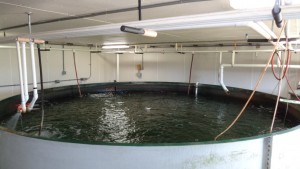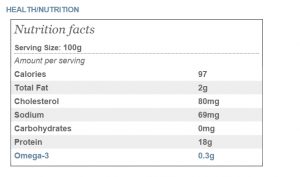The hybrid striped bass sounds like something out of a science fiction novel…but it’s not science fiction, it’s real life. The hybrid striped bass was produced as a foodfish at a time when the striped bass fisheries were dangerously close to being exhausted. Most of the hybrid striped bass produced in the market today is referred to as the Sunshine Cross, which is a cross between a male striped bass and a female white bass. They can be distinguished from each other by broken stripes, rather than horizontal stripes, on the body.
These fish aren’t produced in some laboratory under the management of a mad scientist. They are developed on aquaculture farms. These farms have ponds or tanks, called Recirculating Aquaculture Systems (RASs). In these ponds and tanks, the striped bass and white bass are injected with hormones and stripped of their eggs so they can be artificially inseminated with sperm. They are then incubated and cultivated in three different phases, as fry, fingerlings, juveniles, and market sized fish for production and consumption.
The hybrid striped bass was developed because of a need for a new foodfish that could supplement the depleted numbers of the striped bass. The hybrid striped bass grows quickly. Natural reproduction of the fish would not occur quickly: the female striped bass reaches sexual maturity at five to seven years of age, while the male white bass weighs less than two pounds in the first two years of life. Hybrid striped bass reach market size within 15 to 18 months after becoming fingerlings. Hybrids also grow faster in the first two years of life, readily adapt to dry formulated feeds, and are more resistant to diseases than their parental fish.
The hybrid striped bass became part of agriculture in the United States in the late 1980s. Currently, about 10 million lb (4.5 million kg) are produced annually in the United States. By the year 2005, approximately 60% of all striped bass that were raised and harvested in the United States were raised in aquaculture farms located both in inland ponds and ocean nets. Many restaurants sell “striped bass” on their menus, but these are farm-raised hybrid striped bass.
The price of hybrid striped bass is much cheaper than that of the wild striped bass. A whole wild striped bass can cost $297 on Marxfoods.com, while the price of hybrid striped bass is about $4.14 per pound.
The meat of hybrid striped bass is delicious firm, white, and flaky. Its nutrition facts are shown below:



